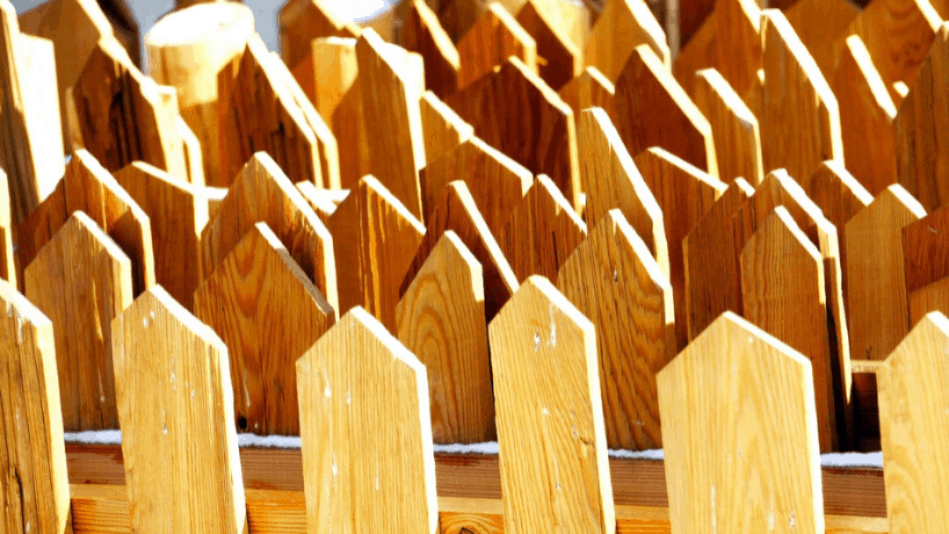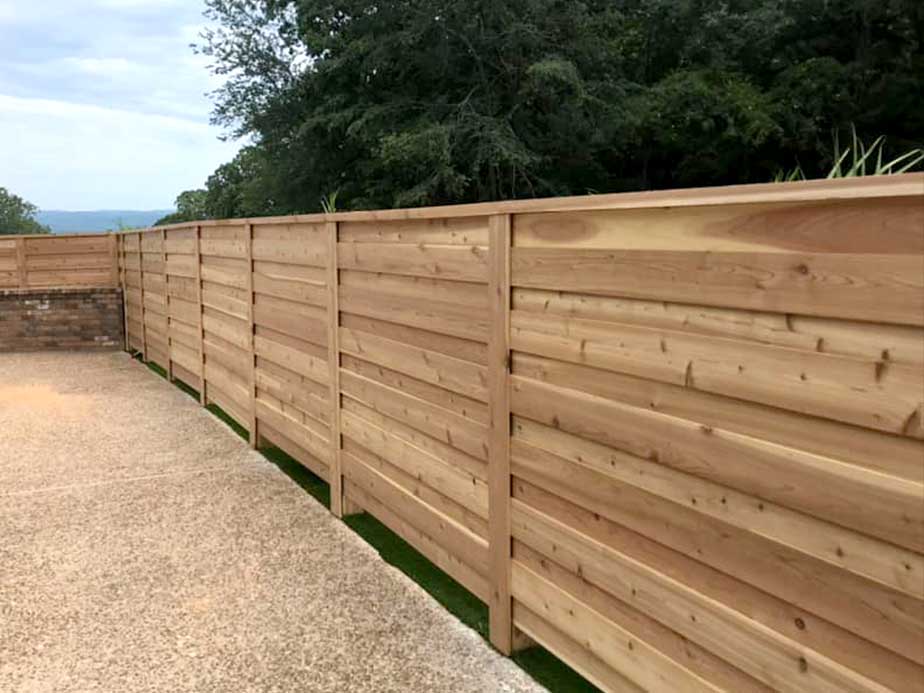All Categories
Featured
While a tall fencing could appear like the ideal alternative, the excellent elevation depends on several elements, consisting of security demands, local laws, and the products made use of. Listed below, we'll describe crucial factors to consider to assist you choose the excellent fencing elevation for ideal security.
![]()
If you stay in a neighborhood regulated by a house owners' association (HOA), you should additionally evaluate any type of particular standards they have for fence height, design, and products. Following these regulations ensures you prevent lawful issues and maintain a good connection with your neighbors.
Taller fencings are harder to scale and can considerably minimize the chance of burglaries. Adding attributes like sharp tops, barbed wire, or perhaps electrical fencing can additionally enhance the barrier's protection. A fence that reaches 8 feet or greater is typically efficient at protecting against most people from conveniently jumping over it.
![]()
Wood Fences: While wood fencings provide privacy, they can be very easy to climb up, specifically if there are no anti-climb features. For maximum safety and security, think about a wooden fencing that's 6 to 8 feet high with sharp tops or trellis expansions that make it tougher to scale. Chain-Link Fences: Chain-link fencings are typically extra resilient and economical than wood, and they can be constructed to the needed elevation for security. To boost prevention, take into consideration adding barbed or razor wire on top. These functions prevent climbing up and make the fence more tough to breach. Wrought Iron Fencings: Wrought iron fences are typically utilized for high-security objectives as a result of their stamina and sturdiness. Their vertical bars make it tough to climb, and they can be constructed to 6 to 8 feet high with additional spikes or attractive anti-climb features to additional secure the boundary. Plastic Fences: Plastic is an outstanding selection if you need a strong, personal fencing, however like wood, vinyl fences might require extra height or protection functions to hinder climbing up. Select a fencing that is at least 6 feet high to guarantee personal privacy and protection. Each material supplies different advantages in terms of aesthetic appeals, resilience, and maintenance, so it is very important to consider your particular needs and choices when selecting a fencing.
Anti-Climb Functions: Installing sharp or sharp tops, trellis extensions, or safety spikes on top of the fencing makes it harder for any individual to scale the fencing. These features function as a solid deterrent to prospective intruders. Barbed or Razor Wire: Adding barbed wire or razor cable at the top of your fence increases safety significantly. This is generally used in high-security areas, such as commercial buildings, but can additionally be an excellent choice for houses in high-risk areas. Electric Fencing: For top-level safety, you might intend to think about including an electric fence to your residential property. Electric fencing, when set up appropriately, can produce a strong deterrent while staying fairly discreet. It delivers a light shock to any person who tries to touch or climb up the fence. Incorporating elevation with these extra functions ensures that your fence offers the highest degree of protection.
Stabilizing the need for privacy and safety while maintaining the visual charm of your home can assist you select the appropriate height and material for your fencing. Ensure that your fencing complements the overall style of your home and doesn't adversely influence the aesthetic appeal.
![]()
By thoroughly thinking about all these elements, you can develop a secure, exclusive, and attractive limit around your home that uses both assurance and protection.

- Understand Local Laws and Zoning Laws. The primary step in choosing your fence elevation is to familiarize yourself with regional regulations. Several municipalities have zoning regulations that dictate the optimum allowable height for fencings, specifically in front yards and along residential property lines. Normally, front lawn fencings are restricted to 3 to 4 feet, while yard fences can be as high as 6 to 8 feet or even more. Some locations may require a permit for fences over a certain height, so it's crucial to examine with your local zoning office prior to starting construction.
If you stay in a neighborhood regulated by a house owners' association (HOA), you should additionally evaluate any type of particular standards they have for fence height, design, and products. Following these regulations ensures you prevent lawful issues and maintain a good connection with your neighbors.
- Identify the Preferred Degree of Safety. The level of security you need is a major variable in identifying the excellent fencing height. A fence elevation of 6 to 8 feet is typically suggested for optimal safety.
Taller fencings are harder to scale and can considerably minimize the chance of burglaries. Adding attributes like sharp tops, barbed wire, or perhaps electrical fencing can additionally enhance the barrier's protection. A fence that reaches 8 feet or greater is typically efficient at protecting against most people from conveniently jumping over it.
- Choose the Right Product for Your Fencing. The material of your fence plays a vital function in its ability to provide security. While taller fences are much better for protection, the kind of material you make use of can improve or prevent the efficiency of the elevation. Below are some popular fencing materials for safety and security:

Wood Fences: While wood fencings provide privacy, they can be very easy to climb up, specifically if there are no anti-climb features. For maximum safety and security, think about a wooden fencing that's 6 to 8 feet high with sharp tops or trellis expansions that make it tougher to scale. Chain-Link Fences: Chain-link fencings are typically extra resilient and economical than wood, and they can be constructed to the needed elevation for security. To boost prevention, take into consideration adding barbed or razor wire on top. These functions prevent climbing up and make the fence more tough to breach. Wrought Iron Fencings: Wrought iron fences are typically utilized for high-security objectives as a result of their stamina and sturdiness. Their vertical bars make it tough to climb, and they can be constructed to 6 to 8 feet high with additional spikes or attractive anti-climb features to additional secure the boundary. Plastic Fences: Plastic is an outstanding selection if you need a strong, personal fencing, however like wood, vinyl fences might require extra height or protection functions to hinder climbing up. Select a fencing that is at least 6 feet high to guarantee personal privacy and protection. Each material supplies different advantages in terms of aesthetic appeals, resilience, and maintenance, so it is very important to consider your particular needs and choices when selecting a fencing.
- Include Safety And Security Features for Extra Defense. While elevation is essential, including extra safety functions to your fencing can boost its performance. Consider the following additions:
Anti-Climb Functions: Installing sharp or sharp tops, trellis extensions, or safety spikes on top of the fencing makes it harder for any individual to scale the fencing. These features function as a solid deterrent to prospective intruders. Barbed or Razor Wire: Adding barbed wire or razor cable at the top of your fence increases safety significantly. This is generally used in high-security areas, such as commercial buildings, but can additionally be an excellent choice for houses in high-risk areas. Electric Fencing: For top-level safety, you might intend to think about including an electric fence to your residential property. Electric fencing, when set up appropriately, can produce a strong deterrent while staying fairly discreet. It delivers a light shock to any person who tries to touch or climb up the fence. Incorporating elevation with these extra functions ensures that your fence offers the highest degree of protection.
- Take Into Consideration Privacy and Aesthetic Preferences. While safety and security must be your main concern, it's likewise vital to consider the visual allure of your fencing. High fences might give safety, yet they can often appear imposing or unfriendly. If privacy is a problem, a solid timber or plastic fencing can offer both protection and privacy, while a functioned iron fence uses safety with an open sight.
Stabilizing the need for privacy and safety while maintaining the visual charm of your home can assist you select the appropriate height and material for your fencing. Ensure that your fencing complements the overall style of your home and doesn't adversely influence the aesthetic appeal.

- Last Ideas on Fencing Height and Security. Selecting the appropriate fencing height for optimal safety entails stabilizing numerous elements, including local guidelines, the degree of security needed, the material of the fencing, and additional protection features. In basic, a fence elevation of 6 to 8 feet is perfect for the majority of residential buildings, with taller fences offering an included layer of security for risky locations. Incorporating the right elevation with a tough, climb-resistant material and added safety and security attributes will help ensure that your fence properly secures your building. Constantly inspect neighborhood codes and consider your personal privacy and visual preferences when making your last decision.
By thoroughly thinking about all these elements, you can develop a secure, exclusive, and attractive limit around your home that uses both assurance and protection.
Latest Posts
Improve Your Hyundai Ownership with Ron Marhofer Hyundai's Special Programs
Published Apr 21, 25
1 min read
Transform Your Home with Top Quality Floor Covering Solutions
Published Apr 21, 25
1 min read
NAPA AutoCare Certified: Count on Montclare Auto Repair for Professional Workmanship
Published Apr 21, 25
2 min read
More
Latest Posts
Improve Your Hyundai Ownership with Ron Marhofer Hyundai's Special Programs
Published Apr 21, 25
1 min read
Transform Your Home with Top Quality Floor Covering Solutions
Published Apr 21, 25
1 min read
NAPA AutoCare Certified: Count on Montclare Auto Repair for Professional Workmanship
Published Apr 21, 25
2 min read